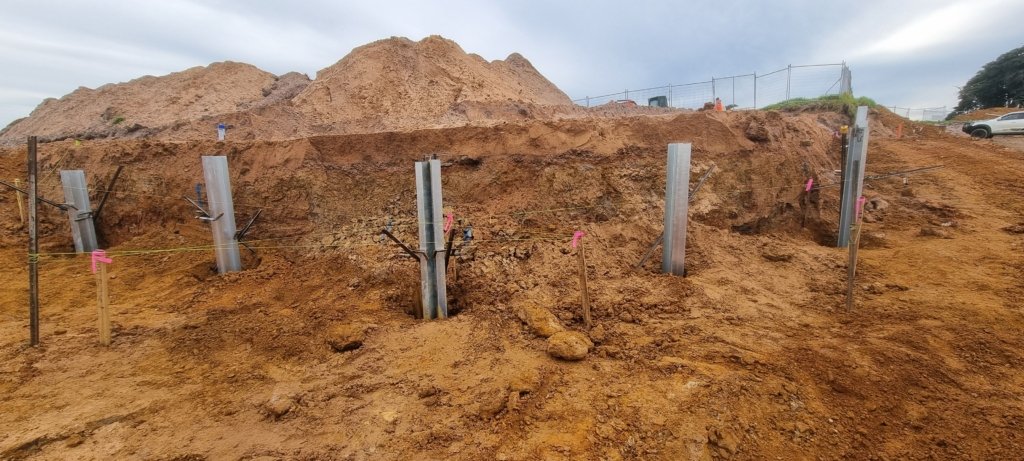Building retaining walls is more than just a landscaping project; it’s a critical construction process that requires careful attention to local laws, property boundaries, and engineering standards. In Australia, navigating the legalities of retaining walls is essential to avoid penalties and ensure the long-term safety of your structure. Venald is here to guide you through the process, ensuring compliance with all necessary regulations while creating a functional and aesthetically pleasing retaining wall.
1. Do You Need Council Approval for Retaining Walls?
In Australia, most retaining walls over 600mm in height require council approval. Depending on your local council, the rules may vary slightly, but the general requirement is that any wall supporting a structure or a load (like a driveway) must be assessed and approved. Venald recommends consulting your local council before starting your project to avoid delays and potential fines.
When Is Approval Not Required?
For walls under 600mm in height and located away from property boundaries, council approval may not be required. However, it’s always wise to verify the specific regulations in your area.
2. Understanding Property Boundaries and Neighboring Rights
Before building, it’s crucial to understand exactly where your property boundaries lie. If your retaining wall encroaches on your neighbor’s land, this could lead to disputes, legal action, or being forced to remove the wall. Hiring a licensed surveyor is a recommended step to avoid boundary issues. Venald prioritizes clear communication with clients and neighbors alike to ensure the construction process goes smoothly.

3. Engineering Requirements for Safety and Compliance
For walls exceeding 1 meter in height, a licensed structural engineer must design and certify the wall. Engineering requirements ensure that the wall is structurally sound and capable of supporting the intended load. This is particularly important for walls in areas with unstable soils or slopes. Venald provides engineering consultation services to ensure your retaining wall is built to last and adheres to Australian safety standards.
4. Drainage is Key to a Stable Retaining Wall
Proper drainage is an essential consideration when building a retaining wall. Without sufficient drainage, water buildup behind the wall can lead to structural failure. In Australia’s varying climates, managing water flow is critical. Most councils require the incorporation of drainage systems like weep holes, gravel backfill, and drainage pipes to ensure the longevity of your wall. Venald specializes in integrating efficient drainage solutions into retaining wall projects.
5. Selecting the Right Materials for Your Retaining Wall
In Australia, the choice of materials for retaining walls is vast, ranging from timber and stone to concrete and steel. The material you choose must comply with local building codes and should be selected based on durability, aesthetics, and environmental impact. For example:
- Timber offers a natural look but may require more maintenance.
- Concrete blocks are sturdy and long-lasting but may need engineering certification.
- Natural stone is visually appealing but can be costly and labor-intensive.
Venald offers a wide selection of materials, ensuring the final result complements your landscaping design while meeting legal and structural requirements.
6. What Are the Rules Around Retaining Walls on Sloped Land?
In sloped areas, retaining walls are essential for stabilizing the soil and preventing erosion. However, the higher the wall, the more structural support it requires. For this reason, walls on sloped land may require more detailed engineering plans, geotechnical assessments, and more rigorous council approval processes. Venald recommends a site inspection to assess your land’s slope and develop the most appropriate strategy for building.
7. Retaining Wall Height Limits and Setbacks
In most cases, Australian councils set strict limits on how high a retaining wall can be built without needing a permit. In some councils, retaining walls above 1 meter must be set back a certain distance from property boundaries. Venald ensures that all walls built meet local setback requirements, preventing issues with neighbors or council regulations.
8. The Importance of Hiring Licensed Contractors
Building a retaining wall is not just a DIY project; it requires skilled professionals who understand local regulations and construction techniques. By hiring a licensed contractor like Venald, you ensure that your project will be carried out to the highest standards, with all legal requirements in place.
9. Ongoing Maintenance for Long-Lasting Retaining Walls
After construction, retaining walls need regular maintenance to ensure long-term stability. Issues like water damage, soil erosion, and material degradation can compromise the wall’s integrity over time. It’s important to address any issues early before they escalate. Venald provides maintenance services to keep your retaining wall in peak condition for years to come.
Conclusion: Ensuring Compliance and Quality with Venald
Building a retaining wall in Australia involves more than just stacking materials. It’s a carefully regulated process that requires compliance with council rules, proper planning, and attention to engineering standards. Venald is your partner in navigating these complexities. From initial planning and council approvals to construction and maintenance, we ensure your retaining wall not only enhances your property but also meets all legal requirements.
By adhering to these guidelines and working with trusted professionals, your retaining wall will stand the test of time, providing both functionality and visual appeal.
